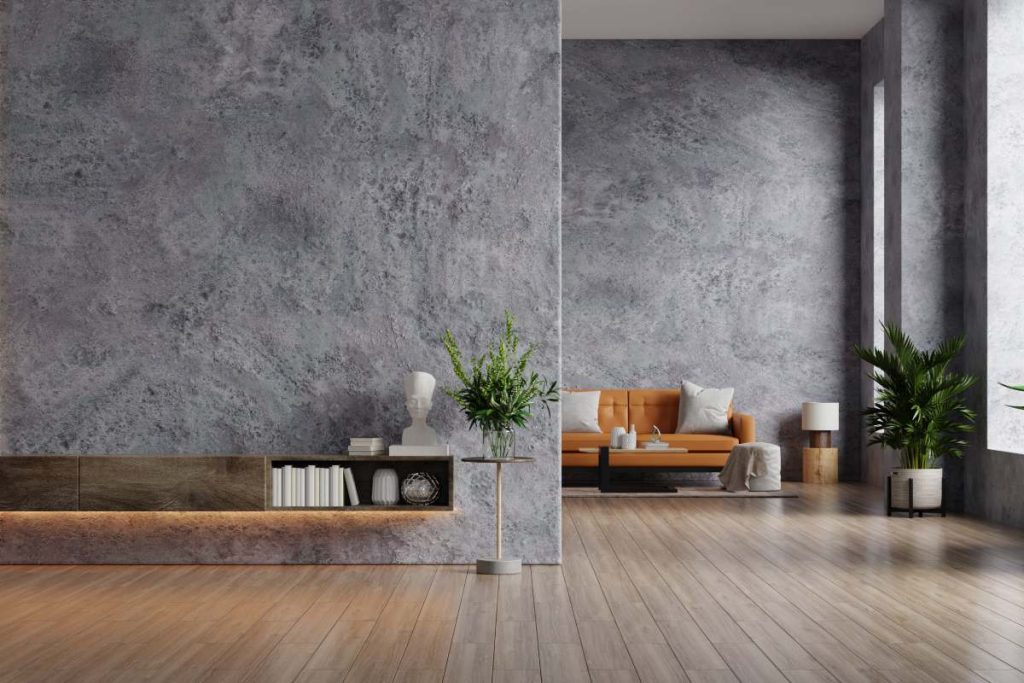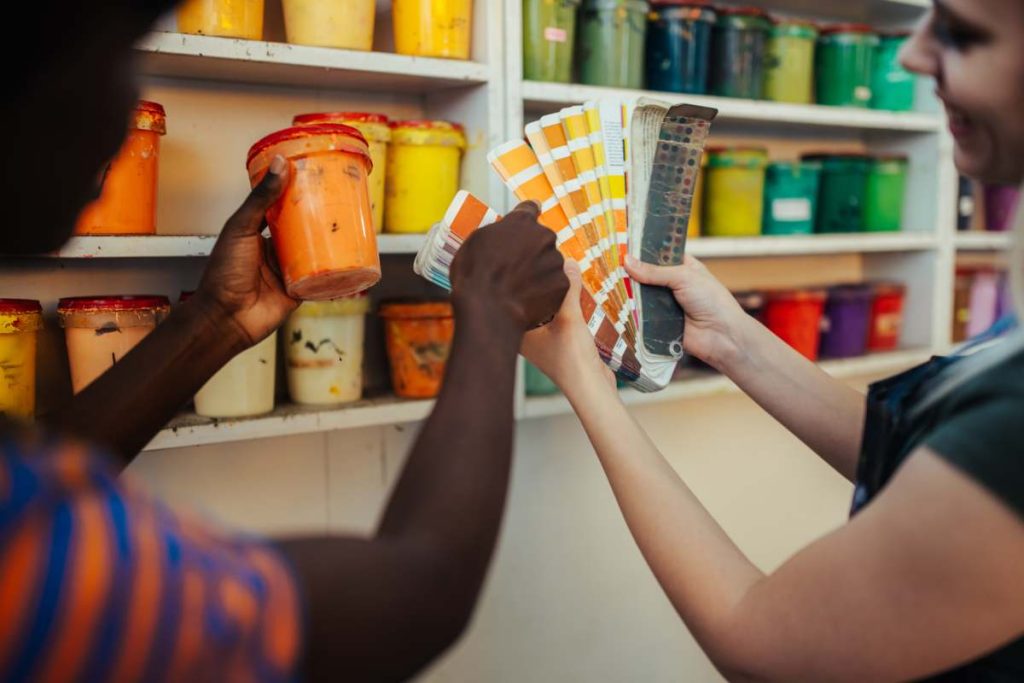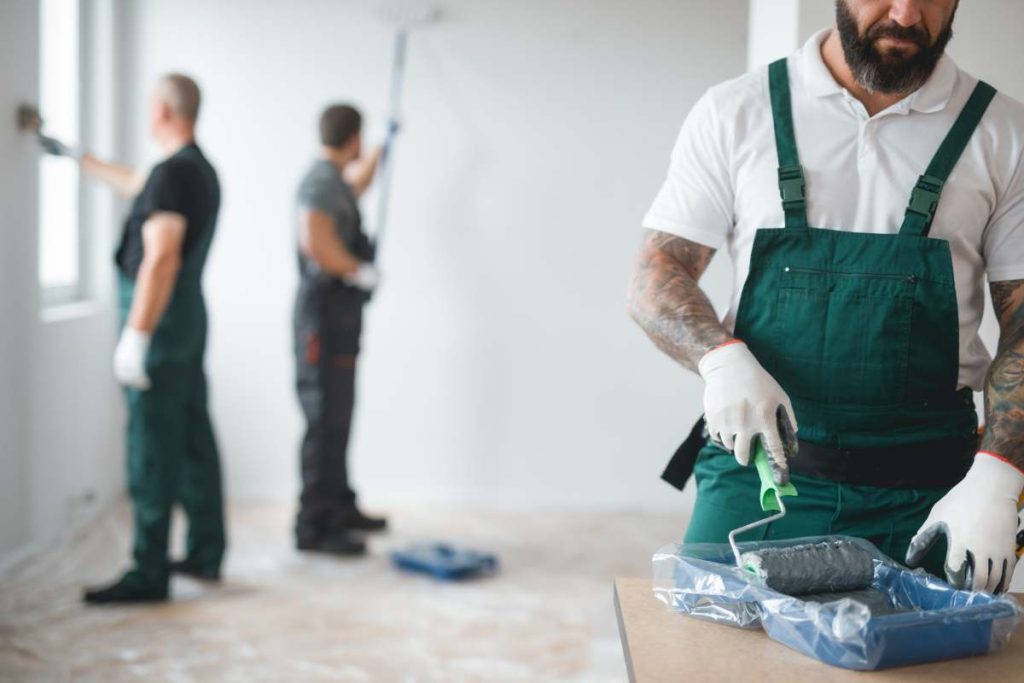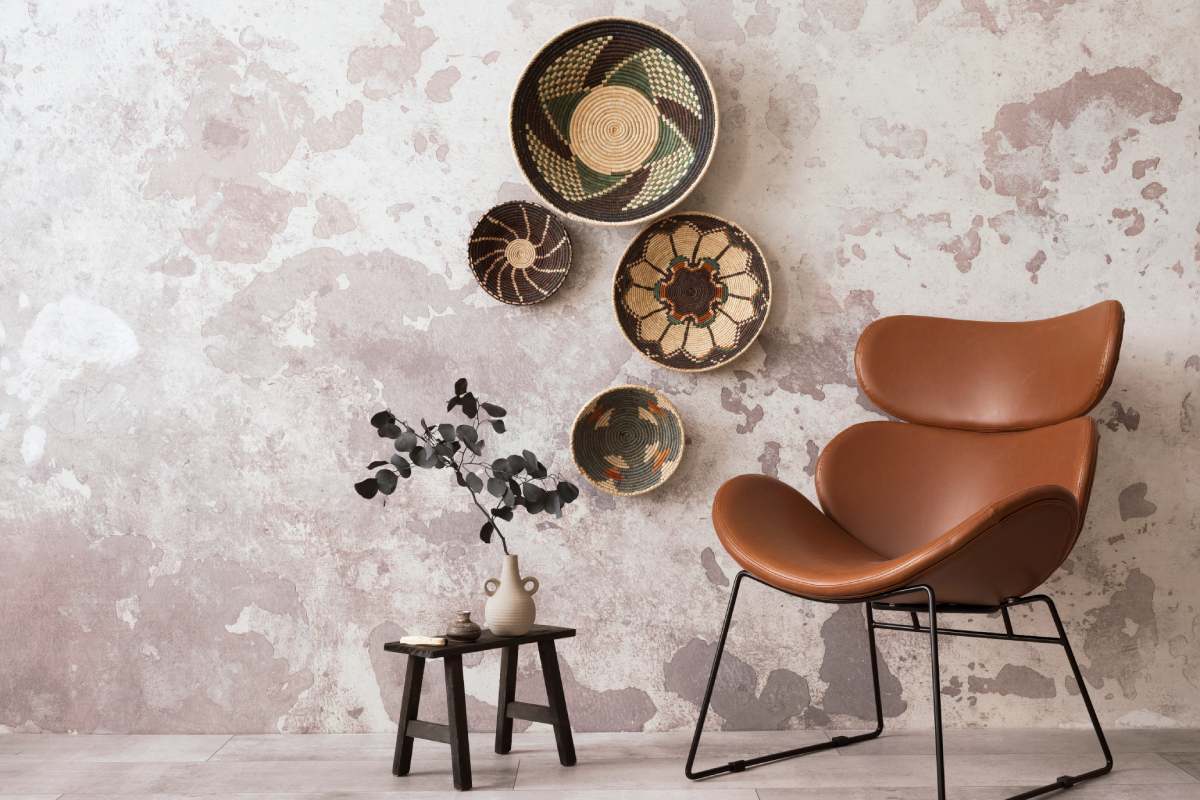In interior design, the right paint can turn a simple space into something stunning. Decorative paint finishes go beyond the usual colour range, offering a playground for creativity and adding texture, depth, and character. Whether you’re after the look of high-end materials, fancy patterns, or just a hint of texture, these finishes can seriously up the style of any room.
This piece dives into the decorative paint finishes scene, looking at the different types, how much they might set you back, and what to think about before diving in, especially for those sprucing up their homes down under in Australia.
What are Decorative Paint Finishes?
Decorative paint finishes refer to a variety of techniques used to enhance the appearance of painted surfaces beyond a simple coat of paint. These finishes are designed to add texture, depth, and visual interest to walls, ceilings, furniture, and other painted surfaces.
They can transform a plain wall into a focal point or create a subtle, elegant backdrop depending on the chosen technique.
Types of Decorative Paint Finishes:
- Textured Finishes: Textured finishes add tactile interest to surfaces by creating patterns or raised textures. Techniques like stippling, rag rolling, or sponge painting involve using tools or materials to apply paint unevenly, resulting in a textured appearance. These finishes can hide imperfections on walls and add a rustic or contemporary look.
- Faux Finishes: Faux finishes replicate the appearance of natural materials such as marble, wood, or stone. Techniques like faux bois (wood graining), faux marble, and faux plaster involve layering paints and glazes to mimic the look and feel of these materials. Faux finishes are versatile and can be used to achieve a variety of decorative effects.
- Metallic Finishes: Metallic finishes incorporate metallic pigments into paint to create a shimmering or reflective surface. These finishes add a touch of glamour and modernity to interiors, often used in contemporary or industrial-style spaces. Metallic paints can be applied using various techniques like brushing, rolling, or spraying.
- Venetian Plaster: Venetian plaster is a traditional technique that originated in Italy. It involves applying multiple layers of plaster mixed with marble dust to create a smooth, polished surface with depth and sheen. Venetian plaster finishes are luxurious and can range from matte to glossy depending on the final treatment.
- Stripes and Patterns: Painting stripes, geometric patterns, or motifs onto walls is another way to create decorative finishes. These designs can be achieved using painter’s tape for crisp lines or stencils for intricate patterns. Striped and patterned finishes can add personality and visual impact to any room.

Benefits of Decorative Paint Finishes:
- Enhanced Aesthetics: Decorative finishes can transform ordinary surfaces into visually appealing focal points.
- Versatility: There are numerous techniques and styles available, making it possible to achieve various looks to suit different interior styles.
- Hide Imperfections: Textured finishes can conceal minor flaws and uneven surfaces on walls.
- Personalization: Homeowners can personalize their living spaces by choosing finishes that reflect their style preferences and complement existing decor.
- Cost-Effective: In many cases, decorative paint finishes can be a cost-effective alternative to expensive materials like natural stone or wood.
Application and Maintenance:
Applying decorative paint finishes typically requires some skill and technique. While some techniques like sponge painting or rag rolling are relatively straightforward and can be DIY projects, others such as Venetian plaster may require professional expertise for best results. Proper surface preparation, including cleaning and priming, is crucial to ensure the longevity of the finish.
Maintenance of decorative paint finishes varies depending on the type of finish. Generally, regular dusting and occasional cleaning with mild soap and water are sufficient to keep these surfaces looking their best. Avoid abrasive cleaners or harsh chemicals that can damage the finish.
Is It Different From Normal Paint?
Yes, decorative paint finishes differ from normal paint primarily in their purpose, appearance, and application techniques:

- Purpose and Appearance:
- Normal Paint: Normal paint is typically applied to surfaces to provide a uniform colour and protect them from wear and tear. It comes in various sheens (e.g., flat, satin, semi-gloss, gloss) and is often chosen based on durability and ease of maintenance.
- Decorative Paint Finishes: These finishes go beyond mere colour by adding texture, depth, and visual interest to surfaces. They can mimic natural materials like wood or marble, create patterns or designs, or incorporate metallic or glossy effects to enhance aesthetics.
- Application Techniques:
- Normal Paint: Applying normal paint usually involves basic techniques such as brushing, rolling, or spraying to achieve an even coat. The focus is on coverage and uniformity of colour.
- Decorative Paint Finishes: These finishes require more specialized techniques and tools. For example, techniques like stippling, rag rolling, sponge painting, or stencilling are used to create textures, patterns, or faux effects. Some finishes, like Venetian plaster, require multiple layers and skilled application to achieve their desired appearance.
- Visual Impact and Versatility:
- Normal Paint: While normal paint provides a clean, consistent appearance, it generally does not offer the same level of visual depth or customization options as decorative finishes.
- Decorative Paint Finishes: These finishes are chosen specifically for their ability to transform surfaces into focal points or to complement existing decor. They can range from subtle textures to bold patterns, offering homeowners a wide range of creative possibilities to personalize their spaces.
- Cost and Maintenance:
- Normal Paint: Normal paint is often chosen for its cost-effectiveness and ease of application. Maintenance typically involves periodic cleaning to remove dust and dirt.
- Decorative Paint Finishes: These finishes can vary widely in cost depending on the complexity of the technique and materials used. Maintenance may require more careful handling and specific cleaning methods to preserve the finish’s appearance over time.
In summary, while normal paint serves practical purposes such as protection and uniform colouration, decorative paint finishes are chosen for their aesthetic enhancement and ability to create unique visual effects. They involve more specialized application techniques and offer greater versatility in terms of design possibilities, making them ideal for homeowners looking to add personality and style to their living spaces.

How Much Do Decorative Paint Finishes Cost in Australia?
The cost of paint finishes in Australia can vary widely depending on several factors, including the type of finish, the complexity of the technique, the size of the area to be painted, and the expertise of the painter. Here are some general guidelines to consider:
- Type of Finish:
- Basic Textured Finishes: Simple techniques like sponge painting or rag rolling may cost less compared to more intricate finishes like Venetian plaster or faux finishes that replicate materials such as marble or wood.
- Faux Finishes: These can range in price depending on the level of detail and the number of layers required to achieve the desired effect.
- Size of the Area:
- Larger areas will naturally cost more to paint than smaller ones. Decorative finishes that cover entire walls or multiple rooms will have higher costs compared to accent walls or smaller surfaces.
- Labor Costs:
- Labour costs in Australia can vary regionally and depending on the experience and skill level of the painter. Professional painters with expertise in decorative finishes may charge higher rates for their services.
- Materials and Supplies:
- The cost of materials such as specialized paints, glazes, plaster, or metallic pigments will also impact the overall cost. Higher-quality materials may result in a more durable and aesthetically pleasing finish.
- Additional Factors:
- Additional factors such as surface preparation (e.g., repairing cracks or imperfections), accessibility (e.g., high ceilings or difficult-to-reach areas), and any custom design work will add to the total cost.
Cost Range:
- Basic Textured Finishes: On average, simple textured finishes might start from AUD $20 to $30 per square meter, but this can vary.
- Faux Finishes: More elaborate faux finishes or techniques like Venetian plaster could range from AUD $50 to $100 per square meter or more, depending on the complexity and materials used.
- Labour Costs: Professional painters may charge hourly rates ranging from AUD $50 to $100 or more, depending on their expertise and location.
Important Considerations:
- Get Multiple Quotes: It’s advisable to get quotes from several painters or contractors to compare prices and ensure you’re getting a fair estimate.
- Quality and Experience: Investing in skilled professionals and quality materials can ensure a longer-lasting and more visually appealing result.
- Discuss Scope and Expectations: Clearly communicate your expectations and the scope of work with the painter to avoid misunderstandings and ensure the final cost aligns with your budget.
Overall, while decorative paint finishes can add significant aesthetic value to your home, it’s essential to budget accordingly and consider both the upfront costs and long-term benefits of investing in quality craftsmanship and materials.
Should You Consider Hiring a Colour Consultant?
Engaging with a professional colour consultant, such as those from Platinum 3 Painting, can greatly benefit homeowners. Platinum 3 Painting consultants are highly praised for their expertise, ensuring the success of your home improvement project. This is especially valuable when selecting paint colours for specific surfaces like aluminium window frames, Zincalume, treated pine, suede paint, and ceiling roses.
Hiring a colour consultant can also be a practical time and money-saving decision in certain scenarios. For instance, during property renovations aimed at selling, creating a harmonious colour scheme throughout the house, or when homeowners feel uncertain about which colours to choose. In such cases, a Platinum 3 Painting offers valuable insights and guidance, helping homeowners avoid potentially expensive mistakes in the future.

